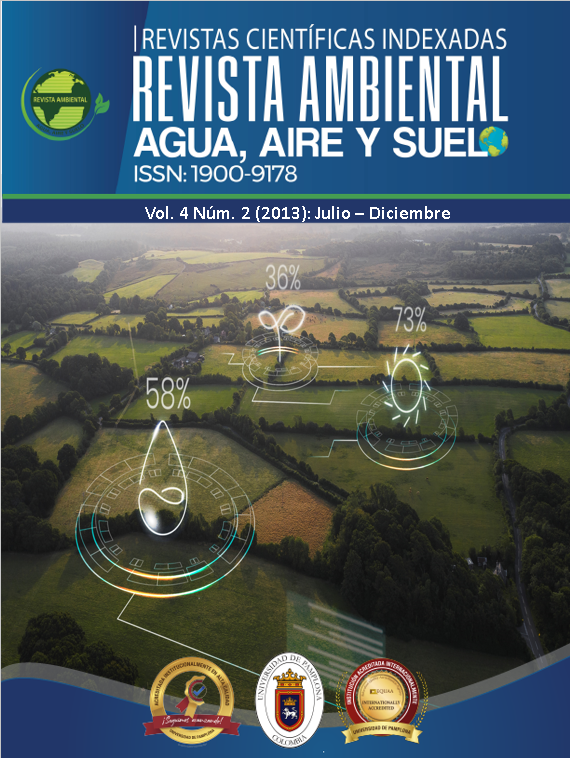Development of biocomposite materials reinforced with natural fibers Colombia
DOI:
https://doi.org/10.24054/aaas.v4i2.2030Keywords:
mechanical characterization, thermal and chemical characterization, biocomposites, natural fibers, polymer matrixAbstract
Biocomposite materials are an environmentally viable alternative to conventional composite materials such as fiberglass and carbon fiber in the manufacture of components or equipment parts, where their function may or may not require high mechanical strength values or may fulfill aesthetic functions. These materials are made up of a polymer resin that forms part of the matrix and natural fibers that act as reinforcement, improving the mechanical and thermal properties of the resin without fiber. Research by different authors has demonstrated the efficiency of natural fibers in reducing the degradation times of polymer resin when it has completed its functional cycle and is subjected to environmental conditions and natural decomposition processes, thus reducing environmental pollution.
The first stage of the following research consists of evaluating and selecting the various types of natural fibers produced in Colombia that meet the technical specifications to serve as reinforcement for the manufacture of biocomposites. In this regard, consideration will be given to fibers that are processed by hand by farmers, as well as by various ethnic groups throughout our country, which would facilitate extraction, processing, and final finishing according to the required conditions. Subsequent After assessing the physical and chemical properties of the fibers, those most suitable for use as reinforcement will be determined. Once the optimal braiding of the selected fibers has been obtained, the manufacturing conditions for the biocomposite material will be determined following conventional procedures for obtaining composite materials. Once this stage is complete, the new material is subjected to mechanical tests to define its behavior under tensile and flexural stresses. Similarly, the thermal properties of the new biocomposite formulations will be examined by means of temperature scans using specialized Differential Scanning Calorimetry (DSC) and Thermogravimetry (TGA) techniques. Once the values of the mechanical properties and thermal transitions are known, we proceed to perform a comparative analysis of their behavior with other materials with equivalent properties. This procedure is carried out using software known as Ces-Edupack, developed by Professor Michael F Ashby. Finally, with the results obtained, it is possible to determine the components that can be manufactured with these materials that have properties similar to those currently in use and to manufacture a prototype of a part used in the automotive industry with the developed biocomposite material.
Downloads
References
Staiger, M. P., & Tucker, N. (2008). Natural-fibre composites in structural applications. En K. Pickering (Ed.), Properties and performance of natural-fibre composites (pp. 269–300). Woodhead Publishing.
Faruk, O., Bledzki, A. K., Fink, H.-P., & Sain, M. (2012). Biocomposites reinforced with natural fibers: 2000–2010. Progress in Polymer Science, 37, 1552–1596.
Hattalli, S., Benaboura, A., Ham-Pichavant, F., Nourmamode, A., & Castellan, A. (2002). Adding value to alfa grass (Stipa tenacissima L.) soda lignin as phenolic resins: Lignin characterization. Polymer Degradation and Stability, 76, 259–264.
Martí-Ferrer, F., Vilaplana, F., Ribes-Greus, A., Benedito-Borras, A., & Sanz-Box, C. (2006). Flour rice husk as filler in block copolymer polypropylene: Effect of different coupling agents. Journal of Applied Polymer Science, 99, 1823–1831.
Hoareau, W., Trindade, W. G., Siegmund, B., Castellan, A., & Frollini, E. (2004). Sugar cane bagasse and curaua lignins oxidized by chlorine dioxide and reacted with furfuryl alcohol: Characterization and stability. Polymer Degradation and Stability, 86, 567–657.
Quiñones Aguilar, C. (s.f.). El tejido en las tribus indígenas de Colombia: Unidad y diversidad. En Geografía humana de Colombia: Variación biológica y cultural en Colombia (Tomo I). Instituto Colombiano de Cultura Hispánica.
Artesanías de Colombia S.A. – CENDAR. (2010, 10 de junio). Artículo sobre el chocolatillo.
Vasco Uribe, L. G. (2005). Tejiendo el monte. Cestería de los Embera-Chamí. Montaje Fondo de Promoción de la Cultura. http://www.luguiva.net
Biblioteca Luis Ángel Arango. (s.f.). El tejido. http://www.banrepcultural.org/blaavirtual/modosycostumbres/wake1/pag16-19
Bejarano de Gamboa, A. M. (2007, 15 de abril). Trajes regionales del Departamento del Cauca: Paéces y Guambianos.
Wambua, P., Ivens, J., & Verpoest, I. (2003). Natural fibres: Can they replace glass in fibre reinforced plastics? Composites Science and Technology, 63, 1259–1264. https://doi.org/[colocar DOI si está disponible]
Foulk, J. D., Akin, D. E., & Dodd, R. B. (2000, 6–9 de marzo). New low-cost flax fibers for composites. SAE Technical Paper No. 2000-01-1133, SAE 2000 World Congress, Detroit.
Mohanty, A. K., Drazl, L. T., & Misra, M. (2002). Engineered natural fiber reinforced polypropylene composites: Influence of surface modifications and novel powder impregnation processing. Journal of Adhesion Science and Technology, 16(8), 999–1015.
Joshi, S. V., Drzal, L. T., Mohanty, A. K., & Arora, S. (2004). Are natural fiber composites environmentally superior to glass fiber reinforced composites? Composites Part A, 35, 371–376. https://doi.org/[colocar DOI si está disponible]
Penagos García, G. (2011). Optimización de los materiales empleados y de las técnicas de fabricación de propulsores marinos convencionales con materiales compuestos. Tesis Doctoral.
Downloads
Published
Issue
Section
License
Copyright (c) 2022 REVISTA AMBIENTAL AGUA, AIRE Y SUELO

This work is licensed under a Creative Commons Attribution-NonCommercial 4.0 International License.










